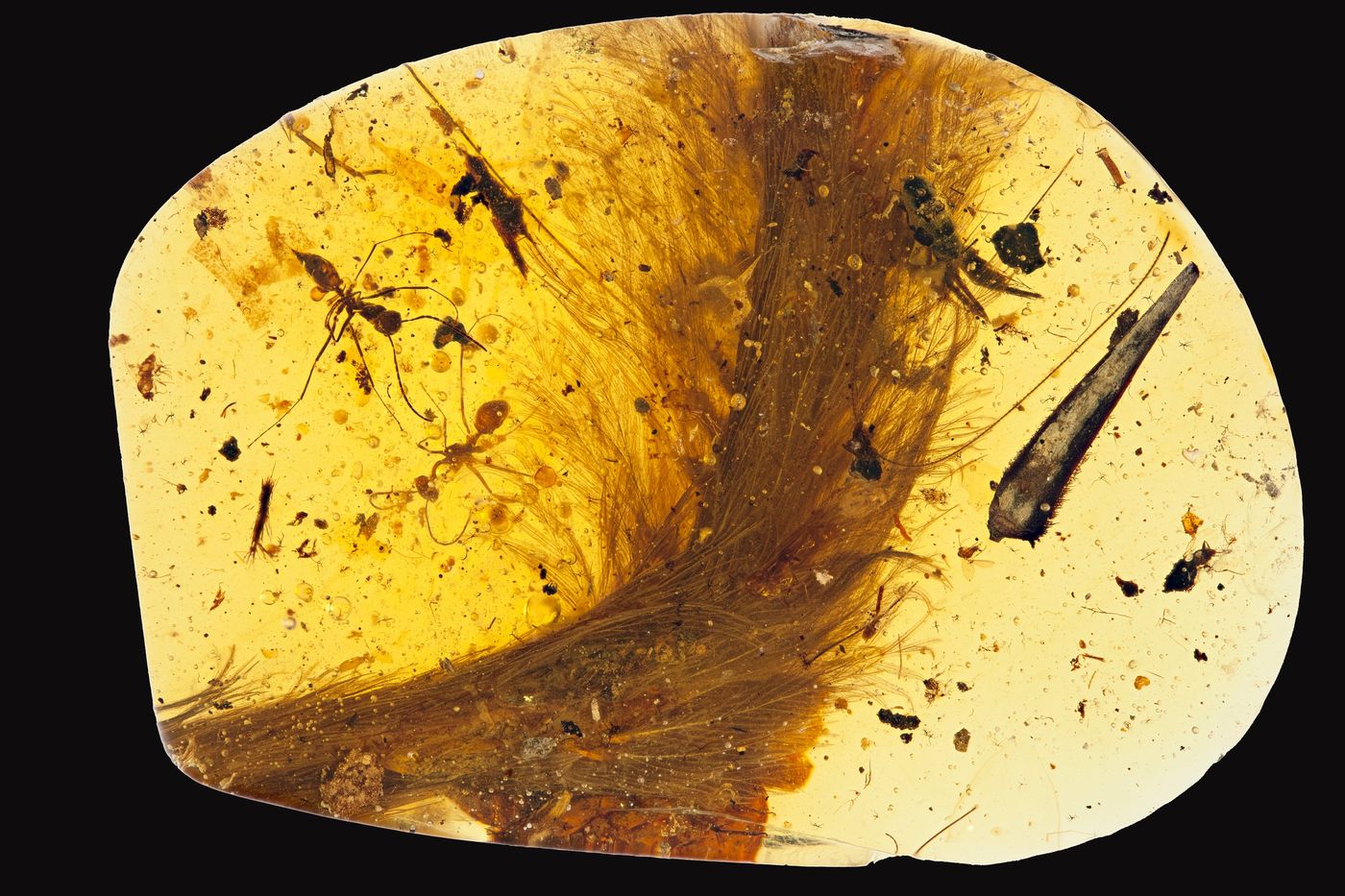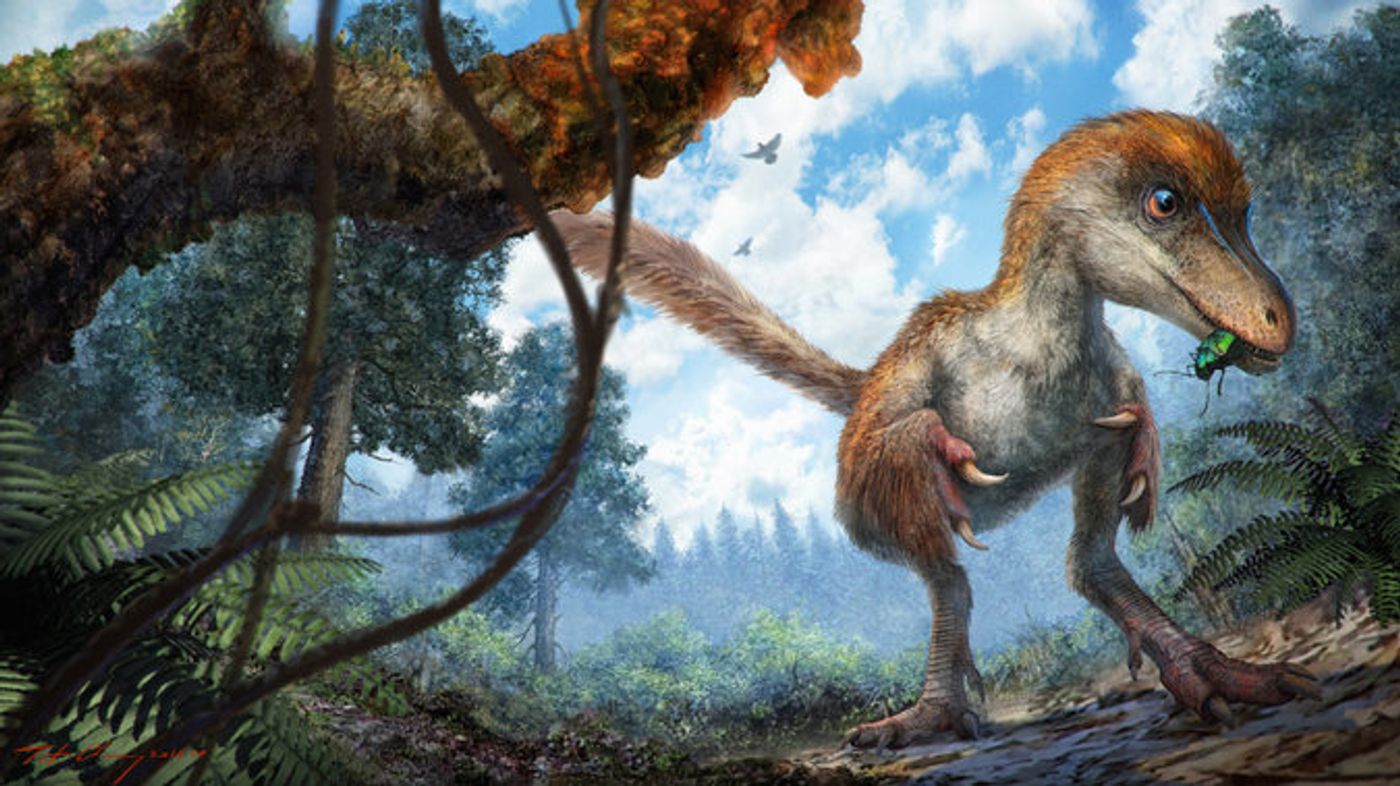Amber-Encased Fossil Provides Glimpse at Dinosaur Tail Feathers
A fossilized relic encased inside of a hunk of amber appears to be a well-preserved specimen of a dinosaur tail with feathers, researchers say. More importantly, it encases important details about the bone structure and tissues, which are details that are very hard to come by in most other kinds of fossils.
Image Credit: Ryan McKellar/Royal Saskatchewan Museum
Experts from the China University of Geosciences in Beijing, have been able to differentiate the tail and feathers from those of any type of bird, modern or prehistoric, simply because of the way the specimen exhibits flexible vertebrae, whereas birds and their closest ancestors have rod-like tails that lack this flexibility.
The findings, by Dr. Xing and his colleagues, have been published in the journal Current Biology.
"The new material preserves a tail consisting of eight vertebrae from a juvenile; these are surrounded by feathers that are preserved in 3D and with microscopic detail," says Ryan McKellar of the Royal Saskatchewan Museum in Canada.
"We can be sure of the source because the vertebrae are not fused into a rod or pygostyle as in modern birds and their closest relatives. Instead, the tail is long and flexible, with keels of feathers running down each side." In other words, the feathers definitely are those of a dinosaur not a prehistoric bird.
Like many of the other amber-encased fossils that keep popping up from time to time, this one originated from Myanmar and was picked up in 2015. These amber-preserved fossils are great because they do an excellent job of preserving tissues and other details that researchers find valuable in their research.
Experts used CT scans and other forms of microscopic observation to get a closer look and believe that the tail and feathers most likely belonged to a juvenile type of non-avian theropod, which is a carnivorous dinosaur that existed in the middle of the Cretaceous period some 99 million years ago.
Image Credit: Chung-tat Cheung
The scans and observations revealed that the feathers aren’t as complex as those found on modern birds. They lack a structural shaft through the center, so these feather fossils may be a peek into the first evolutionary development of animalistic feathers before they would become what they are today.
"Amber pieces preserve tiny snapshots of ancient ecosystems, but they record microscopic details, three-dimensional arrangements, and labile tissues that are difficult to study in other settings," McKellar continued. "This is a new source of information that is worth researching with intensity and protecting as a fossil resource."
Because our understanding of feathered dinosaurs is still very much a young idea, we currently know very little about it. For years, we’ve thought of dinosaurs as scaly reptile-like animals, but with the notion that many were probably feathered, we are figuring out that the world was probably very different than we thought it was millions of years ago.
Fossils like this one are game-changing because they help to form our final understanding of what the world was really like when the dinosaurs were still walking the Earth.
Source: New York Times










